
Book Title
10th Edition
ISBN: 9781337605656
Author: CROSS
Publisher: CENGAGE L
expand_more
expand_more
format_list_bulleted
Question
Chapter 13, Problem 2IS
Summary Introduction
Case summary: Individual H paid in advance to the individual G for building a shed. G only completed half of the work and H paid individual I $500 for completion of the remaining work.
To find: The amount of compensation.
Expert Solution & Answer
Trending nowThis is a popular solution!

Students have asked these similar questions
The company's total assets are
Question 2
MGMT2026 Production and Operations Management Semester II 2024-2025
a. Aman ltd. desires to locate a new facility. Based on preliminary analysis, the choice has been
reduced to four locations: A, B, C, and D. These four locations were rated on a scale from 1
(worst) to 10 (best) on each of four criteria. Each criterion was also weighted to indicate its
importance (i.e., the higher the weight, the more important). The list of ratings and weights
follows in the Table 2 below:
Table 2
Factor Score Evaluation by Location
Criterion
Weights
A
B
с
D
Wages
25
4
5
3
4
Government Policies
30
8
7
6
5
Unionisation
Weather
15
6
4
3
2
30
3
4
6
5
i.
Based on weighted scores, where should Acme locate its new facility?
[6 marks]
b. An operations manager has narrowed down the search for a new factory to three locations. The
fixed and variable costs associated with each location is given in the table below.
i.
Table 3
Location
Fixed Cost
Variable Cost
A
$100,000
$10
B
$150,000
$7
с
$200,000
$5…
Right Answer
Knowledge Booster
Similar questions
- Provide answer this financial accounting question answer will be accurate and step by step calculationarrow_forwardMoose Enterprises finds it is necessary to determine its marginal cost of capital. Moose’s current capital structure calls for 50 percent debt, 30 percent preferred stock, and 20 percent common equity. Initially, common equity will be in the form of retained earnings (Ke) and then new common stock (Kn). The costs of the various sources of financing are as follows: debt, 9.6 percent; preferred stock, 9 percent; retained earnings, 10 percent; and new common stock, 11.2 percent. a. What is the initial weighted average cost of capital? (Include debt, preferred stock, and common equity in the form of retained earnings, Ke.) b. If the firm has $18 million in retained earnings, at what size capital structure will the firm run out of retained earnings? c. What will the marginal cost of capital be immediately after that point? (Equity will remain at 20 percent of the capital structure, but will all be in the form of new common stock, Kn.) d. The 9.6 percent cost of debt referred to earlier…arrow_forwardWhat was the direct labor cost?arrow_forward
- What are the estimated cash receiptsarrow_forwardWhat was the cash balance on November 1 ?arrow_forward7. Berkeley Farms wants to determine the minimum cost of capital point for the firm. Assume it is considering the following financial plans: Cost (aftertax) Weights Plan A Debt .................................. 4.0% 30% Preferred stock .................. 8.0 15 Common equity ................. 12.0 55 Plan B Debt .................................. 4.5% 40% Preferred stock .................. 8.5 15 Common equity ................. 13.0 45 Plan C Debt .................................. 5.0% 45% Preferred stock .................. 18.7 15 Common equity ................. 12.8 40 Plan D Debt .................................. 12.0% 50% Preferred stock .................. 19.2 15 Common equity ................. 14.5 35 a. Which of the four plans has the lowest weighted average cost of capital? Use the Kd (cost of debt) = Y(1 - T), Kp (Cost of preferred stock) = Dp/Pp - F, Ke = D1/P0 + g formulas or I will not understand.arrow_forward
- Please solve this question Financial accounting and step by step explanationarrow_forwardNeed use the Kd (cost of debt) = Y(1 - T), Kp (Cost of preferred stock) = Dp/Pp - F, Ke = D1/P0 + g formulas or I will not understand. Delta Corporation has the following capital structure: Cost Weighted (after-tax) Weights Cost Debt 8.1% 35% 2.84% Preferred stock (Kp) 9.6 5 .48 Common equity (Ke) (retained earnings) 10.1 60 6.06 Weighted average cost of capital (Ka) 9.38% a. If the firm has $18…arrow_forwardCalculate the budgeted balance of accounts payablearrow_forward
arrow_back_ios
SEE MORE QUESTIONS
arrow_forward_ios
Recommended textbooks for you
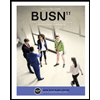 BUSN 11 Introduction to Business Student EditionBusinessISBN:9781337407137Author:KellyPublisher:Cengage Learning
BUSN 11 Introduction to Business Student EditionBusinessISBN:9781337407137Author:KellyPublisher:Cengage Learning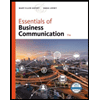 Essentials of Business Communication (MindTap Cou...BusinessISBN:9781337386494Author:Mary Ellen Guffey, Dana LoewyPublisher:Cengage Learning
Essentials of Business Communication (MindTap Cou...BusinessISBN:9781337386494Author:Mary Ellen Guffey, Dana LoewyPublisher:Cengage Learning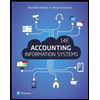 Accounting Information Systems (14th Edition)BusinessISBN:9780134474021Author:Marshall B. Romney, Paul J. SteinbartPublisher:PEARSON
Accounting Information Systems (14th Edition)BusinessISBN:9780134474021Author:Marshall B. Romney, Paul J. SteinbartPublisher:PEARSON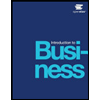
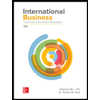 International Business: Competing in the Global M...BusinessISBN:9781259929441Author:Charles W. L. Hill Dr, G. Tomas M. HultPublisher:McGraw-Hill Education
International Business: Competing in the Global M...BusinessISBN:9781259929441Author:Charles W. L. Hill Dr, G. Tomas M. HultPublisher:McGraw-Hill Education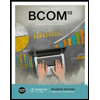

BUSN 11 Introduction to Business Student Edition
Business
ISBN:9781337407137
Author:Kelly
Publisher:Cengage Learning

Essentials of Business Communication (MindTap Cou...
Business
ISBN:9781337386494
Author:Mary Ellen Guffey, Dana Loewy
Publisher:Cengage Learning

Accounting Information Systems (14th Edition)
Business
ISBN:9780134474021
Author:Marshall B. Romney, Paul J. Steinbart
Publisher:PEARSON


International Business: Competing in the Global M...
Business
ISBN:9781259929441
Author:Charles W. L. Hill Dr, G. Tomas M. Hult
Publisher:McGraw-Hill Education
